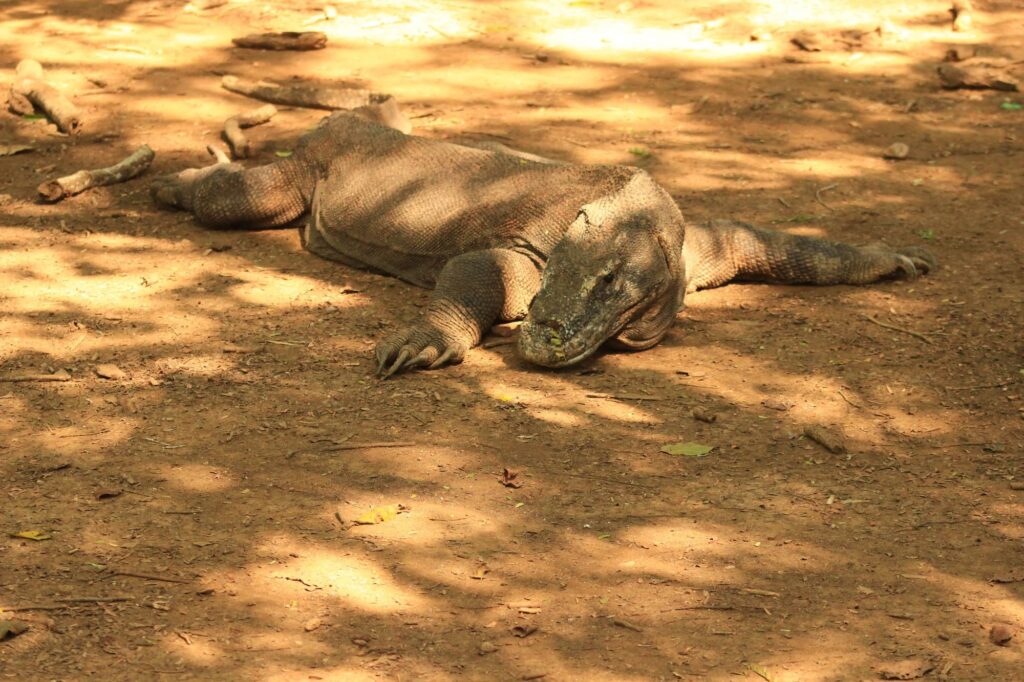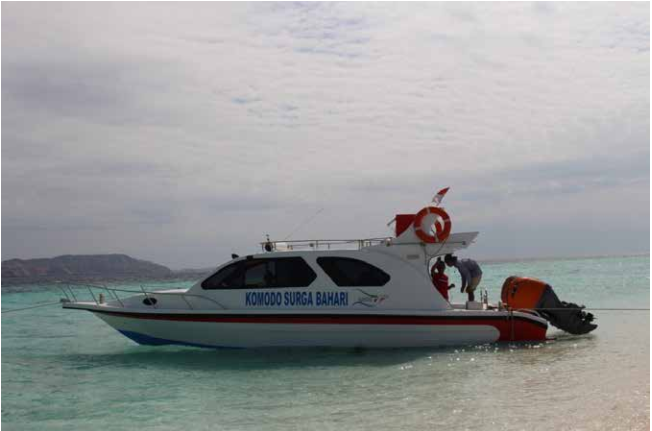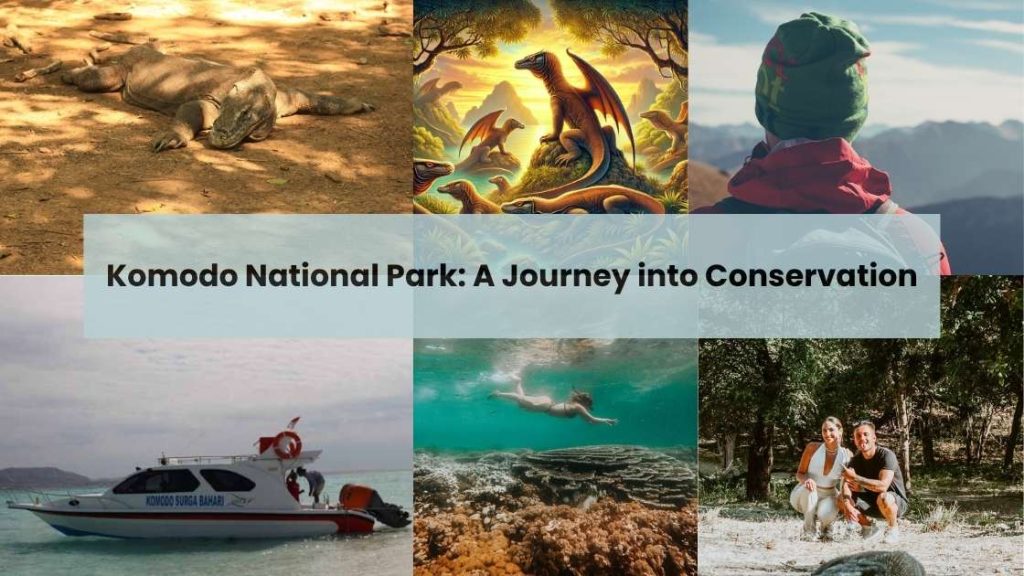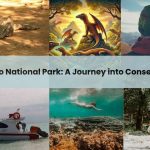Nestled in the heart of Indonesia’s Lesser Sunda Islands, Komodo national park stands as one of the world’s most unique and awe-inspiring natural wonders. Known as the home of the legendary Komodo dragons, this UNESCO World Heritage Site offers travelers a rare opportunity to witness ancient reptiles, pristine islands, and breathtaking underwater biodiversity. Whether you’re planning a Komodo island trip, a Komodo boat trip, or an adventurous Komodo tour, this destination promises an unforgettable experience that blends adventure, wildlife, and conservation.
The Origins of Komodo national park

Established in 1980, Komodo national Park was originally created to protect the endangered Komodo dragon (Varanus komodoensis), the largest lizard on Earth. Over time, the park’s mission expanded to include the conservation of its entire ecosystem — both land and marine. Today, it encompasses three major islands: Komodo, Rinca, and Padar, along with numerous smaller islets. These islands are surrounded by the crystal-clear waters of the Flores Sea, home to over 1,000 species of fish and 260 species of coral.
As conservation efforts deepened, the park gained global recognition for its biodiversity and cultural significance. In 1991, it was declared a UNESCO World Heritage Site, cementing its role as a global model for wildlife and marine conservation.
The Magnificent Komodo Dragon: The Island’s Ancient Guardian

No Komodo dragon tour is complete without witnessing these magnificent creatures in their natural habitat. The Komodo dragon, which can grow up to three meters long and weigh more than 70 kilograms, is both fascinating and fearsome. These reptiles are apex predators, feeding on deer, wild boars, and even water buffalo. Despite their intimidating presence, they play an essential role in maintaining the ecological balance of the islands.
Guided tours on Komodo and Rinca Islands allow visitors to safely observe the dragons while learning about their behavior, hunting techniques, and breeding patterns. Rangers, who serve as both guides and protectors, ensure that visitors maintain a safe distance while respecting the dragons’ natural environment.
A Paradise for Nature and Adventure Lovers
Beyond the Komodo dragons, Komodo National Park offers an array of activities that captivate adventurers and nature enthusiasts alike. From trekking across rugged landscapes to diving into vibrant coral reefs, every moment on a Komodo island trip is filled with wonder.
1. Trekking and Island Exploration

Each island in the park has its unique charm. Padar Island, with its iconic viewpoint overlooking three different-colored beaches, is a must-visit. A short but steep trek rewards you with one of Indonesia’s most breathtaking panoramic views. Rinca Island, on the other hand, offers a more rugged terrain and an excellent chance to spot Komodo dragons up close in the wild.
For those who love hiking, the trails through dry savannahs, lush valleys, and coastal cliffs reveal the park’s natural diversity and scenic grandeur.
2. Komodo Boat Trip Experience

A Komodo boat trip is one of the most popular ways to explore the park. Whether you choose a traditional wooden phinisi boat or a luxurious liveaboard yacht, sailing through the turquoise waters offers a sense of freedom and discovery. Most boat trips include stops at several islands, snorkeling spots, and beaches — each with its own allure.
Travelers can enjoy sunrise breakfasts on deck, swim with manta rays at Manta Point, or relax on the stunning Pink Beach, one of the few naturally pink-sand beaches in the world. Spending a night on a liveaboard also allows visitors to stargaze under the clear night sky, far from city lights — a truly magical experience.
3. Diving and Snorkeling Paradise

Komodo National Park is globally renowned as one of the best diving destinations in the world. The park’s waters are part of the Coral Triangle, the most biodiverse marine region on Earth. Divers can explore colorful coral gardens, encounter giant manta rays, reef sharks, sea turtles, and schools of tropical fish. Popular dive sites include Crystal Rock, Castle Rock, and Batu Bolong, each offering a unique underwater spectacle.
Even if you’re not a diver, snorkeling is equally rewarding. The reefs around Kanawa Island and Siaba Besar offer calm waters perfect for beginners, with vibrant marine life just below the surface.
Sustainability and Conservation Efforts
As tourism continues to grow, balancing ecological preservation with visitor experiences has become a top priority. The Indonesian government and local communities have implemented strict regulations to ensure that the park’s fragile ecosystem remains protected.
Entry permits, limited visitor quotas, and guided tours are part of the strategy to minimize human impact. Several local organizations also work to educate visitors about conservation, responsible tourism, and the importance of supporting local communities.
Additionally, eco-friendly tour operators now offer Komodo tours that emphasize sustainability — using solar-powered boats, minimizing plastic waste, and sourcing food locally. By choosing such options, travelers can contribute directly to the protection of this extraordinary environment.
The Role of Local Communities
The people living around Komodo National Park play a crucial role in its conservation. Traditional fishing villages such as Komodo Village and Mesa Island are home to communities that have lived in harmony with nature for generations. Many locals now work as rangers, guides, and boat crew members, sharing their knowledge and culture with visitors.
By participating in a Komodo island trip, travelers not only witness natural beauty but also support local livelihoods. This community-based tourism model helps ensure that the benefits of conservation reach those who depend on the park’s resources.
Best Time to Visit Komodo National Park

The best time to embark on a Komodo tour is during the dry season, from April to December, when the weather is warm, sunny, and ideal for island hopping and diving. During this period, the seas are calm, and visibility underwater is excellent. The rainy season, from January to March, brings lush green landscapes but can make sea travel more challenging.
If you’re keen to see Komodo dragons at their most active, visit between May and August, when temperatures are moderate and the dragons are often spotted basking in open areas.
How to Get There
Most travelers begin their journey in Labuan Bajo, a charming port town on Flores Island, which serves as the gateway to Komodo National Park. From Labuan Bajo, you can join a Komodo boat trip or private charter that takes you across the park’s stunning islands. Labuan Bajo is easily accessible by daily flights from major Indonesian cities like Bali and Jakarta.
Reasons to Include Komodo National Park in Your Travel List
A trip to Komodo National Park is more than just an adventure — it’s a journey into the heart of conservation. Here, you witness the delicate balance between humans and nature, experience Indonesia’s wild beauty, and encounter creatures that have roamed the Earth for millions of years.
Whether you’re trekking with dragons, diving into coral wonderlands, or sailing across emerald seas, every Komodo island trip leaves you with memories that last a lifetime. By choosing responsible travel and supporting conservation initiatives, you help ensure that future generations can continue to marvel at the wonders of Komodo National Park.



